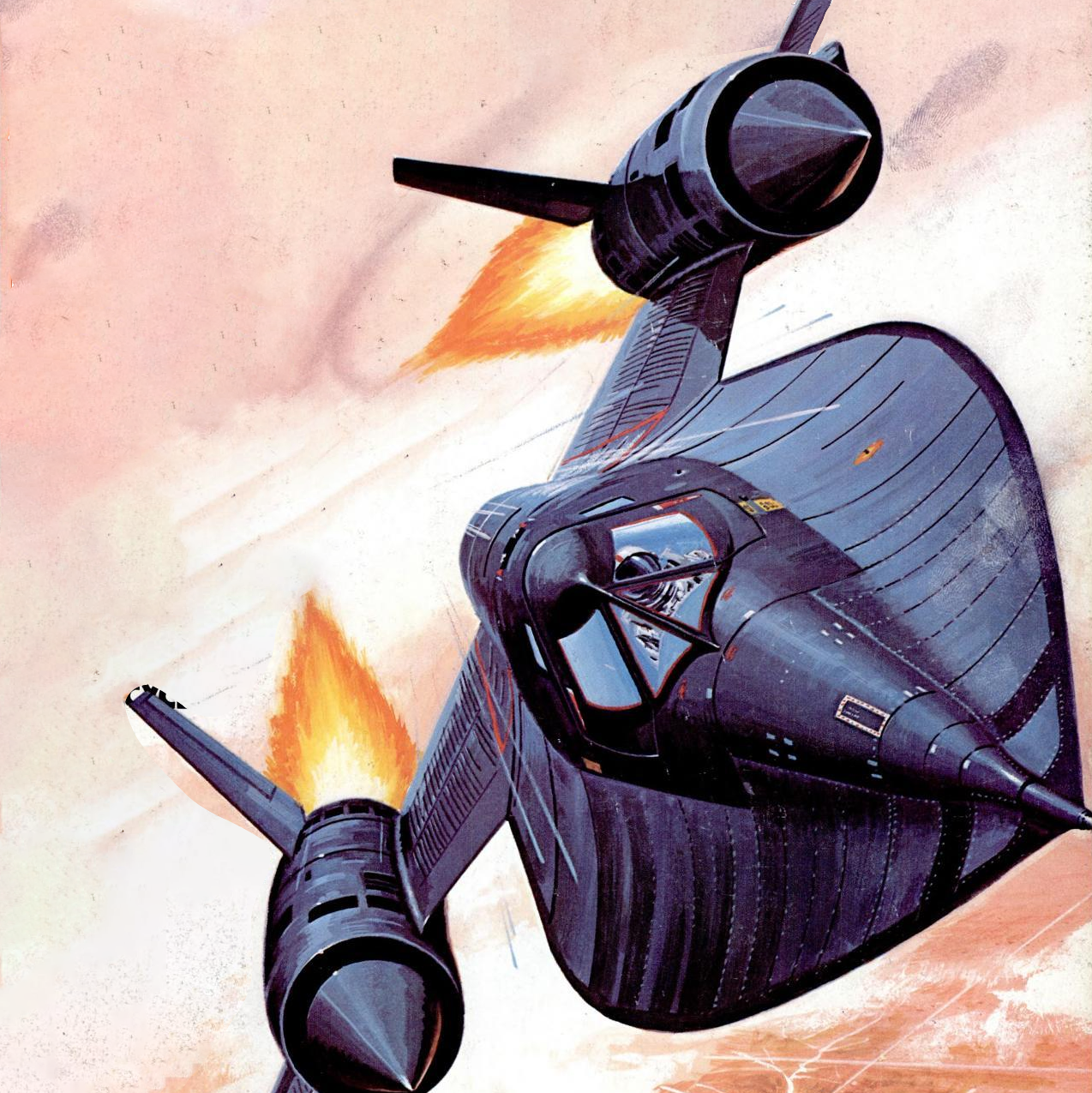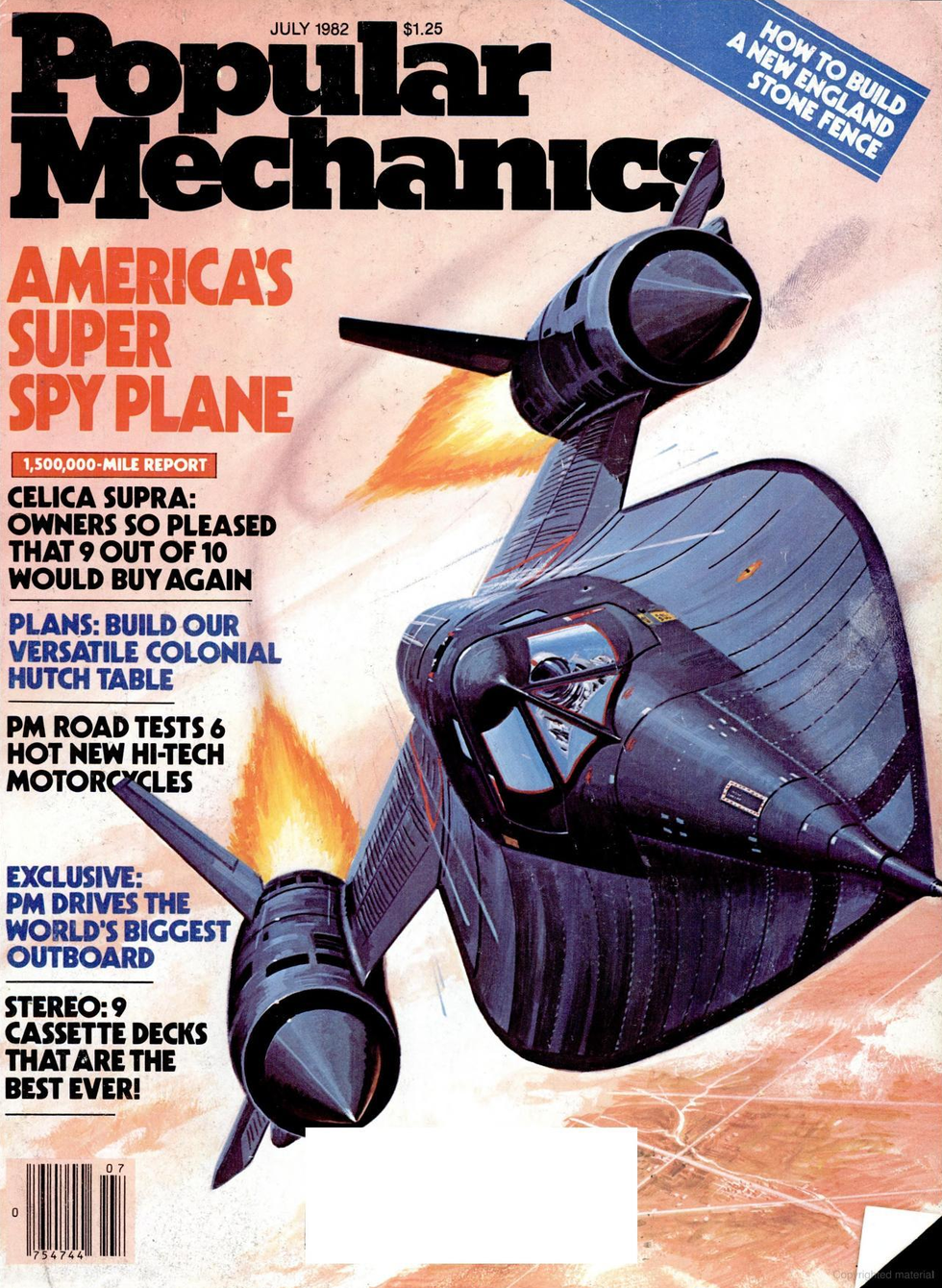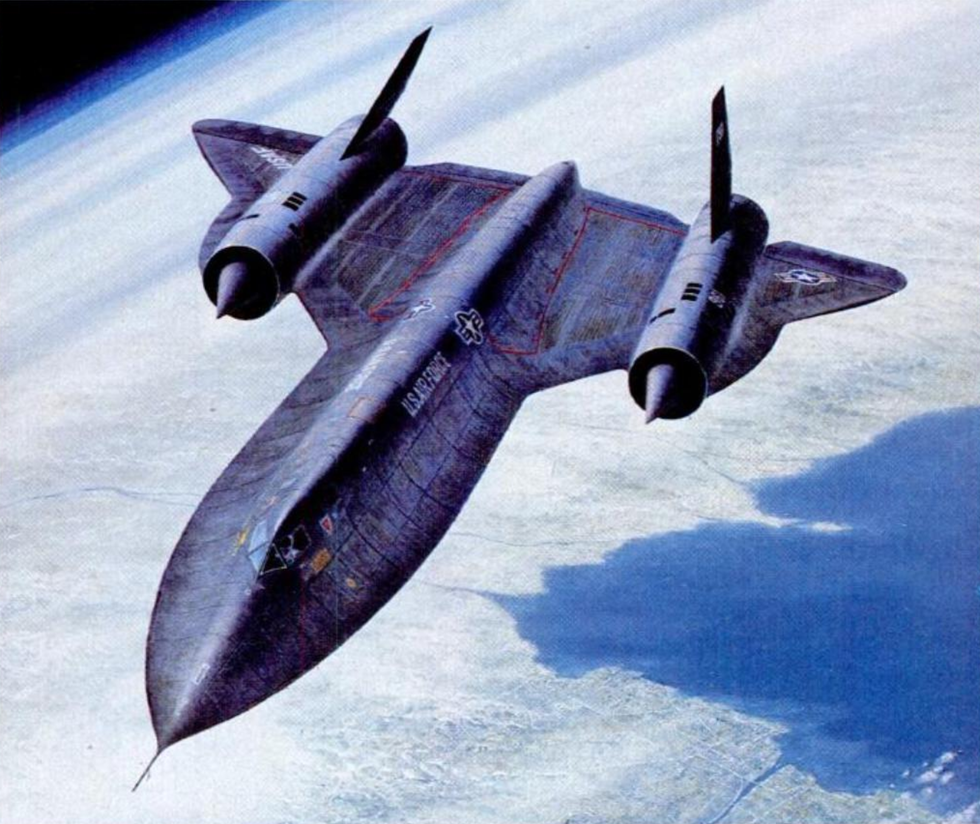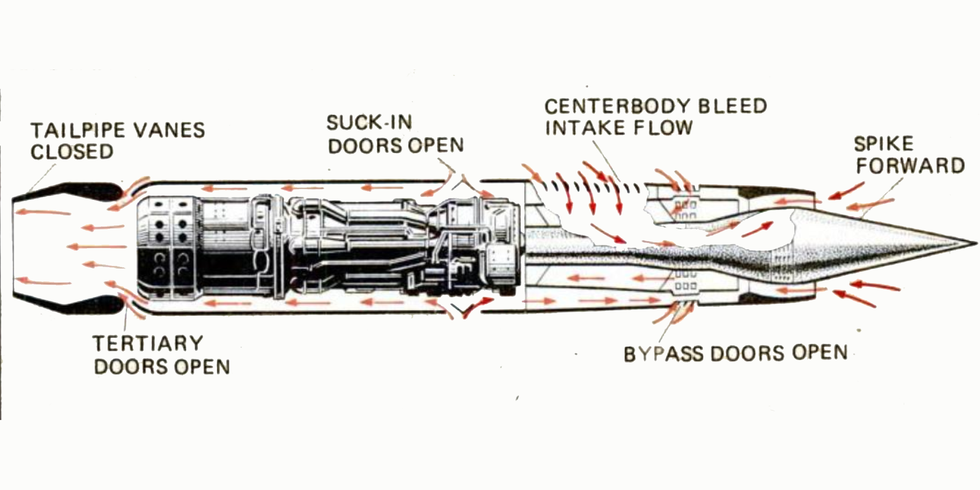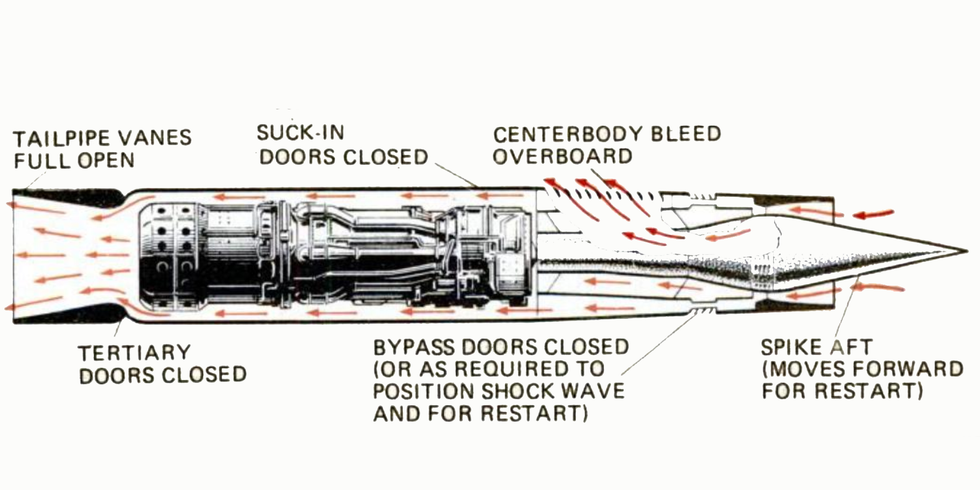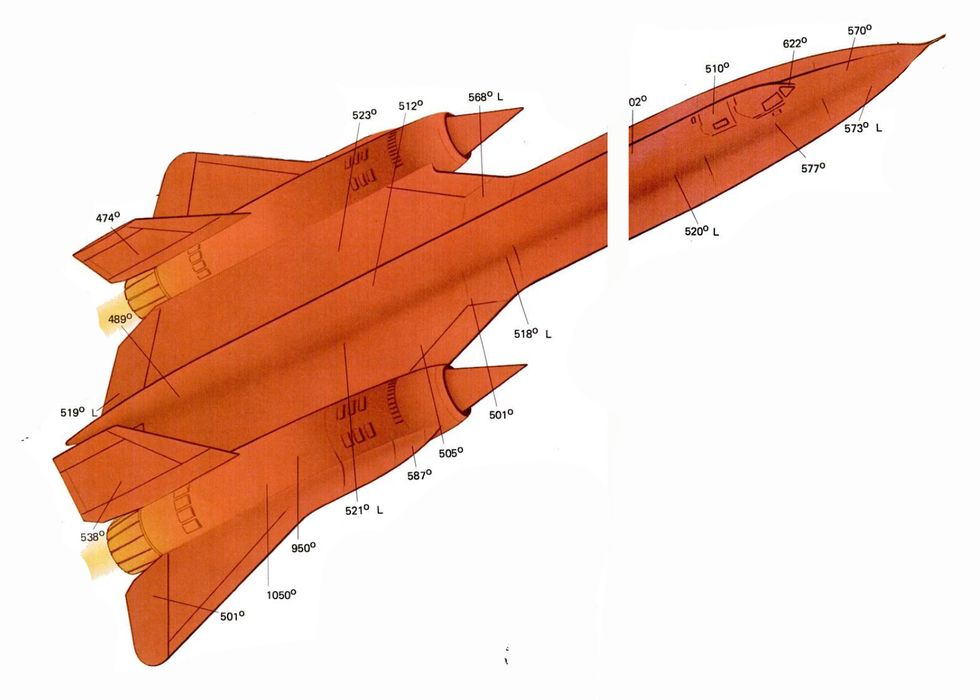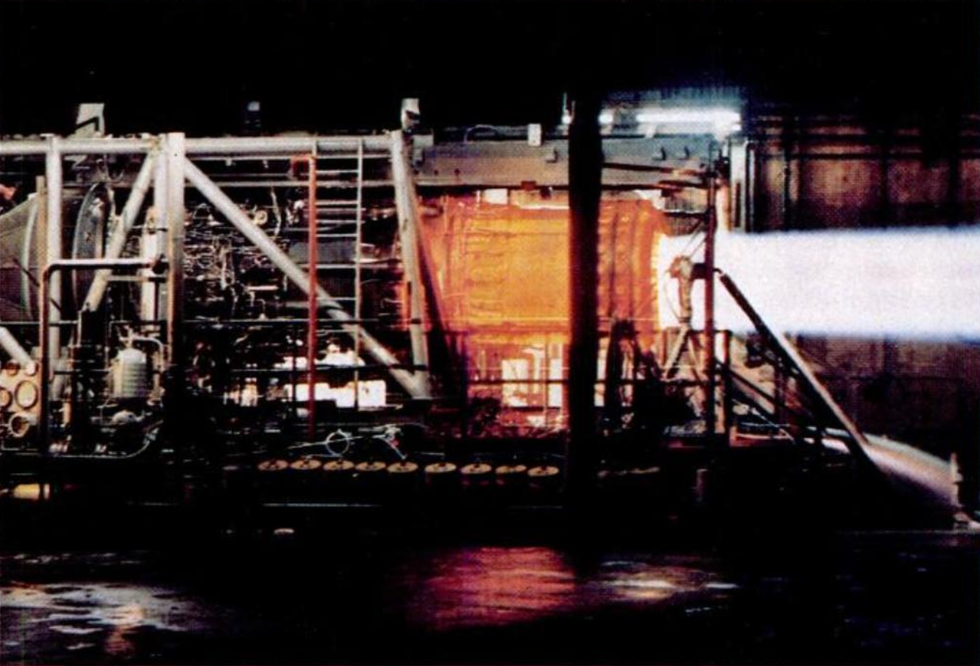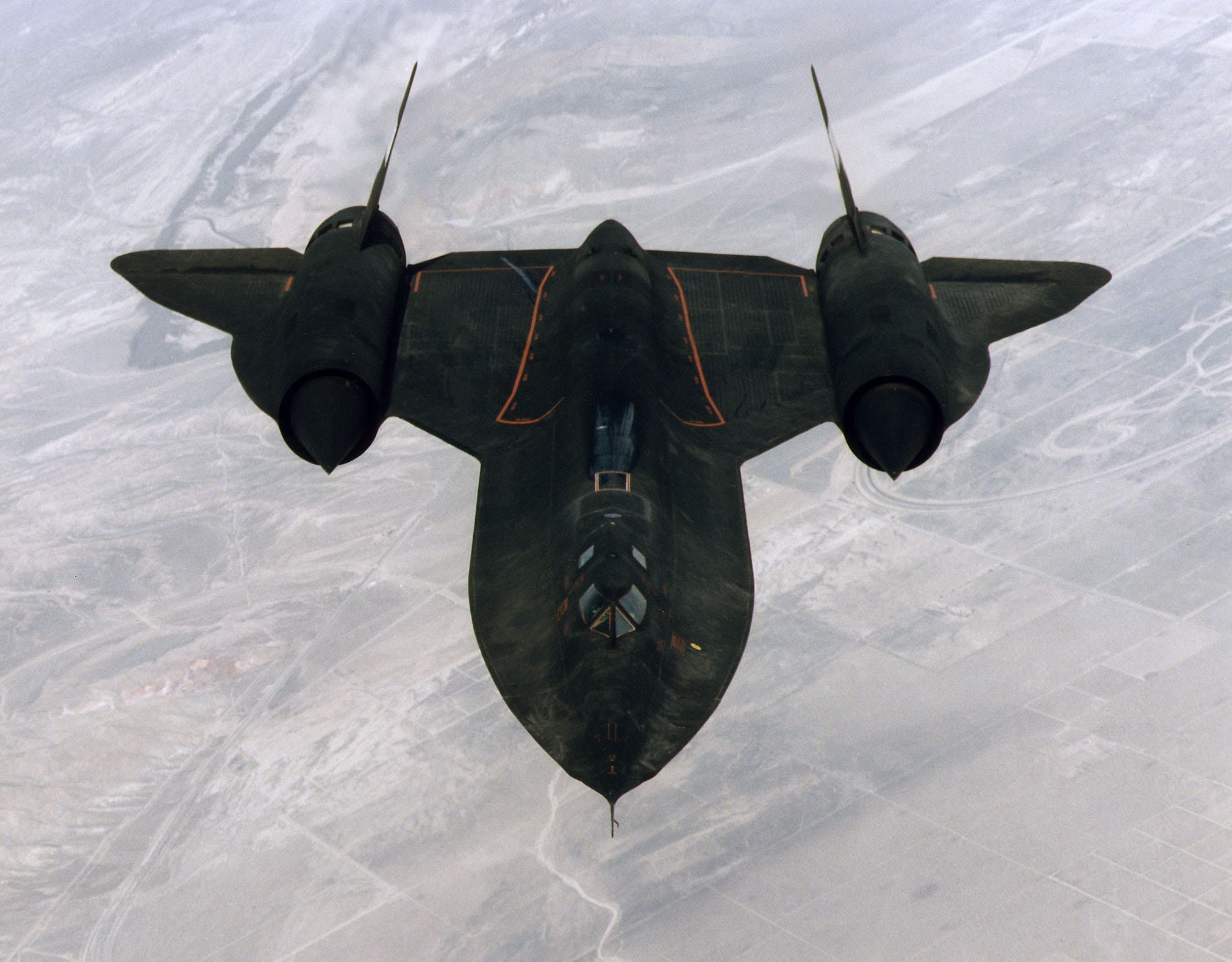The SR-71 Blackbird, the most impressive plane ever created at the time, remained a mystery even 20 years after its first flight. But in the July 1982 issue, Popular Mechanics published a tell-all story from one of the plane's engineers, explaining how the awesome aircraft came to be. The U.S. Air Force retired the SR-71 in 1998, but Lockheed Martin has ongoing plans for the SR-72, also known as "The Son of Blackbird."
Original editor's note: Many months of effort were required for Kelly Johnson to clear the above material for publication through Defense Department and C.I.A. authorities. Because the aircraft is still routinely performing the most critical and sensitive reconnaissance missions, its ultimate performance capabilities may not be known for many years. Trouble spots, even those as far flung as the Falkland Islands, become immediately subject to unseen Blackbird "migrations"-proof that its range is truly worldwide.
The Lockheed U-2 subsonic, high-altitude reconnaissance, plane first flew in 1955. It went operational a year later. It became obvious to those of us who were involved in the U-2 program that Russian developments in the radar and missile fields would shortly make the U-Bird too vulnerable to continue overflights of Soviet territory, as indeed happened when Francis Gary Powers was shot down on May Day of 1960.
Starting in 1956, we had made many studies and tests to improve the survivability of the U-2. Few gains were forthcoming except in cruise altitude, so we took up studies of other designs. We examined the use of new fuels such as boron slurries and liquid hydrogen. The latter was carried into the early manufacturing phase because it was possible to produce an aircraft with cruising altitudes well over 100,000 feet at a Mach number of 2.5. This design was scrapped, however, because of the terrible logistic problems of providing fuel in the field.
It was still apparent that we would need a manned reconnaissance aircraft that could be dispatched on worldwide missions when required. From vulnerability studies, we derived certain design requirements for this craft: a cruising speed well over Mach 3, a cruising altitude over 80,000 feet and a very low radar cross section over a wide band of frequencies. Electronic countermeasures and advanced communications gear were mandatory. The aircraft needed at least two engines for safety reasons.
Operating at ram-air temperatures of over 800° F. immediately ruled out aluminum as a basic structural material, leaving only various alloys of titanium and stainless steel. It meant the development of high-temperature plastics for radomes and other structures, as well as a new hydraulic fluid, greases, electric wiring and plugs, and a whole host of other equipment. The fuel had to be stable under temperatures as low as -90° F. in subsonic cruising flight during aerial refueling, and to over 350° F. at high cruising speeds when it would be fed into the engine fuel system. There, it would be used first as hydraulic fluid, at 600° F., to control the afterburner exit flap before being fed into the burner cans of the powerplant and the afterburner itself.
Cooling the cockpit and crew turned out to be far more difficult than on the X-15 research airplane, which could fly twice as fast (but only for a few minutes per flight). The rubber tires of the landing gear had to be protected from the heat by burying the retraction wells in the fuselage fuel tanks for radiation cooling.
Special attention had to be given to the crew escape system to allow safe ejection from 0 mph at sea level to Mach 4 at over 100,000 feet. The problems of taking pictures through windows subjected to a hot, turbulent airflow on the fuselage also had to be solved.
Beginning in April 1958, I made a series of competitive proposals for Mach 3-plus reconnaissance aircraft to the C.I.A. and to the U.S. Air Force. These airplanes were designated in the Skunk Works (Lockheed's advanced projects group) by design numbers of A-1 through A-12. In August 1959, our A-12 design was declared the winner, which gave us a limited go-ahead for a four-month period to conduct tests on certain models and to build a full-scale mock-up. In January 1960, we got a full go-ahead on the design, manufacturing and testing of 12 aircraft.
We discussed the next version of the aircraft, an Air Defense long-range fighter (designated YF-12A), with the Air Force in March 1960. They were very pleased with our proposal. In early January 1961, I made the first proposal for a strategic reconnaissance bomber version.
We were encouraged to continue our company-funded studies on the aircraft. As we progressed in the development, we encountered very strong opposition in certain Air Force quarters on the part of those trying to save the North American B-70 program, which was in considerable trouble. Life became very interesting in that the SR-71 was competing with an airplane five times its weight and size.
The first A-12 flew on April 26, 1962. In June, the Air Force evaluation team reviewed our design and the YF-12A mock-up, and we were given good grades.
Our discussions continued with Gen. Curtis LeMay and his Strategic Air Command officers. In December 1 1962, we were finally put on contract to build the first group of six SR-71 aircraft. The first YF-12A flew early next August.
Going back to the origins of the final design, the required performance in speed, altitude, and range made it evident that a thin, delta-wing platform with a very moderate wing loading was required to allow flight at very high altitude. A long, slender fuselage was necessary to contain most of the fuel, as well as the landing gear and payloads. To reduce the wing trim drag, the fuselage was fitted with lateral surfaces called chines, which actually converted the forward fuselage into a fixed canard which developed lift.
The hardest design problem on the airplane was making the engine air inlet and ejector (tailpipe) work properly. The inlet cone had to move almost three feet to keep the shock wave where we wanted it. A computer-controlled hydraulic actuator was required to provide operating forces of up to 31,000 pounds under certain flow conditions in the nacelles. To account for the effect of the fuselage chine airflow, the inlets were pointed slightly down and in toward the fuselage.
The use of dual vertical tails canted inward on the engine nacelles took advantage of the chine vortex in such a way that the directional stability improved as the angle of attack of the aircraft increased.
All the usual low- and high-speed wind-tunnel tests were run on the various configurations of the A-12 and YF-12A, and continued on the SR-71. Substantial efforts went into optimizing chine design and conical camber of the wing leading edge. No useful lift increase was realized from the use of wing flaps of any type, so we depended entirely on our low 'wing loading and powerful ground effect to get satisfactory takeoff and landing characteristics.
Wind-tunnel data on fuselage trim effects were of marginal value because of two factors: structural deflection due to fuselage weight distribution; and the effect of fuel quantity and temperature. The latter was caused by fuel on the bottom of the tanks keeping that section of the fuselage cool, while the top section got increasingly hotter as fuel was burned. This tended to push the chines downward due to differential expansion of the top and bottom of the fuselage.
The Blackbird's Power Package
In many ways, the development of the J58 engine by Pratt & Whitney more than 20 years ago paralleled the Lock heed adventure into unknown engineering. Not only would the new mill be required to handle inlet air temperatures of 800° Fahrenheit at speeds of Mach 3 and above, but it would burn a fuel that would also be used as a hydraulic fluid and coolant. reaching temperatures as high as 600° Fahrenheit before combustion.
"We had to learn how to form sheet metal from materials which previously had been used only for forging turbine blades," recalls William Brown, then engineering manager on the project for Pratt & Whitney. "I do not know of a single part that could have been made from the same materials as those used on previous engines."
Because of the great difficulty of maintaining a smooth airflow through jet engines at high Mach numbers, a "bleed-bypass cycle" involving several sets of nacelle orifices was originated. This cycle maintains an optimum ratio between the intake and exhaust flow rates at all speeds. A movable "spike" is also required to position the supersonic shock wave that forms in the inlet.
Computer simulation was unavailable, so engine/airframe integration was mainly a matter of flight and ground testing. Inlet "stalls" followed by dangerous overheating were an early flight problem. It was also discovered that the placement of an air-conditioner dump valve too near a temperature sensor was causing one engine to constantly run faster than the other. And in one instance, during a ground run-up to peak power, a J58 actually ingested its own Pratt & Whitney nameplate, mounted near the inlet, causing major damage to the engine.
By far, the most tunnel time was spent perfecting the nacelle inlets, bleed designs and the tailpipe. We took more than 250,000 pressure readings on a quarter-scale model. We knew nacelle air leakage would cause high drag, so an actual, full-size nacelle was fitted with end plugs and air leakage was measured carefully. Proper sealing paid off well in flight testing.
With the engines located halfway out on the wing span, we were quite concerned with the very high yawing moment that would develop in an engine-inlet stall. So we installed accelerometers in the fuselage to immediately sense the yaw rate and command the rudder booster to apply go of correction within 0.5 seconds. This device worked so well that our test pilots very often couldn't tell whether the right or left engine had blown out. They knew they had a blowout, of course, from the bad buffeting they received with a "popped shock." Subsequently, an automatic restart device was developed which limits this engine-out time to a very short period.
Titanium Alloys
The decision was made to use various alloys of titanium for the basic structure of the Blackbirds. Only titanium and steel had the ability to withstand the operating temperatures encountered. Aged B-120 titanium weighs half as much as stainless steel per cubic inch, but its ultimate strength is comparable, so conventional construction was possible, using fewer parts than with steel.
High-strength composites weren't available in the early 1960s. We did develop a good plastic which has been remarkably serviceable, but it wasn't used for primary structure.
Having made the basic material choice, we decided to build two test units to see if we could reduce our research to practice. The first unit would be used to study thermal effects on our large titanium wing panels. We heated up this element with the computed heat flux that we would encounter in flight. The sample warped into a totally unacceptable shape. To solve this problem, we put chordwise corrugations in the outer skins and ran the tests again. At the design heating rate, the corrugations merely deepened by a few thousandths of an inch and on cooling, returned to the basic shape. I was accused of trying to make a 1932 Ford Trimotor go Mach 3, but the concept worked well.
The second test unit was the forward fuselage and cockpit, which had over 6,000 parts in it of high curvature and thin gauges, as well as a highly complex canopy. This element was tested in an oven where we could determine thermal effects and develop cockpit cooling systems.
We encountered major problems in manufacturing this test unit because the first batch of heat-treated titanium parts was extremely brittle. In fact, if you pushed a piece of the structure off your desk, it would shatter on the floor. We finally resolved the problem by replacing our whole acid pickling setup.
We developed a complex quality-control program. For every batch of 10 parts or more, we processed three test coupons which were subjected to the identical heat treatment of the parts in the batch. One coupon was tensile-tested to failure to de rive the stress-strain data. A quarter-inch cut was made in the edge of the second coupon by a sharp, scissor-like cutter which was then bent around a mandrel at the cut. If the coupon couldn't be bent 180° at a predetermined radius, it was considered too brittle. The third coupon was held in reserve if any reprocessing was required.
Heavy Documentation
For an outfit that hates paperwork, we really deluged ourselves with it. Having made over 13 million titanium parts to date, we can trace the history of all but the first few parts back to the mill pour; for about the last 10 million of them, we've even recorded the direction of the grain in the sheet from which the part was cut. We found out the hard way that most commercial cutting fluids accelerated stress corrosion on hot titanium, so we developed our own.
Titanium is totally incompatible with chlorine, fluorine, cadmium and similar elements. For instance, we were baffled when we discovered that wing panels which we spotwelded in the summer failed early in life, but those made in the winter lasted indefinitely. We finally traced this problem to the Burbank, Calif., water system which had heavily chlorinated water in the summer to prevent algae growth, but no chlorination in the winter. Changing to distilled water to wash the parts resolved this problem. Mechanics using cadmium-plated wrenches worked on the original engine installation. Enough cadmium was left in contact with tightened bolt heads so that when they became hot (over 600° F.) they dropped off! We had to clean out hundreds of tool boxes to remove cadmium-plated tools.
Drilling and machining high-strength titanium alloys, such as B120, required a complete research program to determine the best tool cutter designs, cutting fluids and speeds and feeds for best metal removal rates. We had particular trouble with wing extrusions, which were used by the thousands of feet. Initially, the cost of machining a foot out of the rolled mill part was $19. This was reduced to $11 after much research.
To prevent parts from going under gauge while in the acid bath, we set up a new series of metal gauges two thousandths of an inch thicker than the standard gauges. When we built the first Blackbird, a high-speed drill could bore 17 holes before it was ruined. By the end of the program we had developed drills that could bore 100 holes and then be resharpened.
Throughout this and other programs, it became clear to me that our country needed a 250,000-ton metal-forming press (five times as large as our biggest one available today). When we have to machine away 90 percent of our rough forgings today, both in titanium (SR-71 nacelle rings and landing gears) and aluminum (Lockheed C-5 fuselage side rings), it seems that we are nationally very stupid! My best continuing efforts to solve this problem have been fruitless for many years. Incidentally, the Soviets have been much smarter in this field: They have more and larger forging presses than we do.
Prospecting for Oil
Very difficult problems were encountered with the use of fuel-tank sealants and hydraulic oil. We were finally able to produce a sealant which does a reasonable job over a temperature range of 90° F.
Our experience with hydraulic oil started out on a comical footing. I saw ads in technical journals for a "material to be used to operate up to 900° F. in service. I contacted the producer who agreed to send me some for testing. Imagine my surprise when the material arrived in a large canvas bag. It was a white powder at room temperature. If you put it in a hydraulic system, you would have to thaw out all the lines and other elements with a blowtorch! We finally got a petroleum-based oil developed at Penn State University to which we had to add several other chemicals to maintain its lubricity at high temperatures. It cost $130 per gallon, so absolutely no leaks could be tolerated.
Rubber O-rings couldn't be used at high temperatures, so a complete line of steel rings was provided. Titanium pistons working in titanium cylinders tended to gall and seize until chemical coatings were invented which solved the problem.
For the first flight of the A-12, we had to fly with Pratt & Whitney J75 engines, because the J58 engine wasn't available until January 1963. Then our problems really began!
The first dilemma was caused by foreign-object damage (FOD), a particular problem with the powerful J58 and the tortuous flow path "through the complicated nacelle structure. Small nuts, bolts and metal scraps not removed from the nacelles during construction could be sucked into the engines on starting with devastating results. Besides objects of the above type, the engine sucked in rocks and asphalt pieces from the taxiways and runways. An intensive campaign to control FOD at all stages of construction and operation brought the problem under control.
Initially, air-temperature variations along a given true altitude would cause the Blackbird to wander up and down over several thousand feet in its flight path. Improved autopilots and engine controls have eliminated this problem.
There are no other airplanes flying at our cruising altitude except an occasional U-2, but we wanted to avoid weather balloons sent up by the FAA. If we were to hit the instrumentation package while cruising at over 3,000 feet per second, the impact could be deadly.
Lowering the Boom
Flight planning had to be done very carefully because of sonic-boom problems. We received complaints from many sources. One man stated that the mules on his pack train wanted to jump off the cliff trail when they were "boomed."
Another complainant protested that fishing stopped in lakes in Yellowstone Park if a boom occurred, because the fish went down to the bottom for hours. I had my own complaint when one of my military friends boomed my ranch and broke a $450 plate-glass window. I received no sympathy on this, however.
The SR-71 first flew in December 1964. It was in service with the Strategic Air Command a year later. Inflight refueling turned out to be very routine. Over 18,000 such refuelings have been made to date by all versions of the Blackbird and it has exceeded Mach 3 over 11,000 times.
It has also flown over 15,000 miles with refueling to demonstrate its global range. It is by far the world's fastest, highest flying airplane in service. I expect it to be so for a long time to come.

